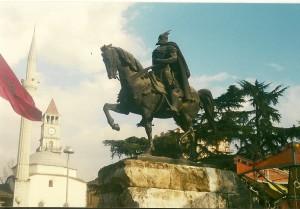 Albania, the Maverick of Europe
Albania, the Maverick of Europe
“It is not the strongest of the species that survives, nor the most intelligent that survives. It is the one that is most adaptable to change.”
Charles Darwin (1809-1882), author of On the Origin of Species.
The Albanians
From Vienna, a small plane takes you to Tirana and a chaotic little airport which might be in some obscure little Third World country. People are milling around and pushing towards the two immigration counters while welcoming friends and relatives are doing the same from the other side of the little hall. Armed soldiers stand beside the immigration officers watching passengers queuing up for entry. Luggage is brought in and pushed manually by workers into an enclosed space near the exit: there are no conveyor belts to move passenger luggage as in any other international airport. No Customs officers are in sight. Retrieving bags seemed a problem in the melee but the offer of two dollars to a stout baggage woman in a white dress ensured that these were picked up and brought to the pavement outside where UN a car was waiting for us. It was early May, 2000.
Albania is the poorest country in Europe. But the Albanians cope, some rather well, because they have the strongest survival skills to live in their difficult modern world. Looking from my twelfth floor window in the Tirana International Hotel, overlooking Skanderbeg Square, which is the very heart of the city, one could easily get the wrong impression. Down below, there is a never ending stream of cars going past, many of them luxury vehicles like BMW, Mercedes-Benz and Audi. A fairly new luxury vehicle can be purchased at a bargain price for, as everyone knows, almost all the cars, except for those owned by foreign agencies, have been stolen in Western Europe and smuggled in through agents in Macedonia with counterfeit documents. Albania comes first in one area of professional expertise: it has the deadliest criminal gangs in Europe.
The Albanians claim descent from a very ancient European people, the Illyrians, who were living in the Eastern Mediterranean over a several thousand years before Christ and traces of their language are still a part of the Albanian language. But living in the cross-roads, in the path of emerging military powers, has not given Albania a peaceful history. First invaded by Macedonian Greeks and then by Romans, who both contributed to moulding the Albanian language and culture, the Roman rule of six centuries from the 3rd Century B.C. to the 4th Century A.D. was the only long period of relative peace and prosperity under pax Romana. The ruins of Roman amphitheatres and buildings are still seen near the major towns. With the decay of the Western Roman Empire, Albanian lands were also invaded by the so-called barbarian tribes that attacked Rome: the European Goths and the Central Asiatic Huns. With the split in the Roman Empire, Albanian lands became a part of the Eastern Roman Byzantine Empire.
With the Byzantine Empire in decline in the 13-14th centuries, Albanian lands were invaded by other warring people: the Avars, the Serbs, the Croats, Bulgars, Venetians and Normans. From the late 14th Century, the Ottoman Turks swept through the Balkans and Albanian lands were incorporated in the Ottoman Empire, a rule which lasted till the early 20th century. The proudest moment of Albanian history was when Skanderbeg Gjergj Kastrioti united some of the tribes and established an independent Albanian state in the middle of the 15th century (1443-1506 A,D.), for a brief period of 35 years, defying Ottoman armies.
Ottoman rule in turn influenced the culture of Albanians. Around 70% were converted to Islam, primarily to evade the taxes that were imposed on Christians. The Islamic tradition of hospitality towards strangers is still strong among ordinary Albanian people and some of the Islamic customs associated with Id still appear during the month of fasting, though Albanians today have little interest in the practice of religion. During the month of Ramadan, drummers with large drums and gaudy costumes and conical hats (resembling more like those of clowns in a circus), pause at vantage points in the streets of Tirana to announce with drumbeats the times for the fast to begin and to end.
Political history
Internecine warring based on tribal loyalties ensured that the Albanians would never have a separate nation till the European powers proclaimed Albania as a nation state in 1913 as part of the dismemberment of the moribund Ottoman Empire. Despite independence from Ottoman rule, Albania remained a barely governable nation with quarrelling landowning aristocrats and interfering neighbouring states. The final vestige of independence was lost when Mussolini’s Italy occupied Albania in 1939 as a stepping stone for the invasion of Greece. Italian withdrawal from the Second World War was followed by a period of rule by Nazi Germany. The Italians built the large main square in Tirana and the broad avenue leading from it through the centre of the city and the large public buildings which still house the main government offices. Nothing comparable has been built since then.
Little credit is given today to the eccentric communist dictator, Enver Hoxha[1], for transforming Albania from a medieval feudal society into an independent modern state. School teacher turned partisan leader, he collaborated with the other legendary partisan hero, Josip Broz Tito of Yugoslavia, to organise the war against the Germans and finally led his ragtag army into Tirana to take over as the undisputed leader of the country. An unabashed admirer of Joseph Stalin, his land reforms destroyed the powerful landowning aristocracy and with successive assistance from Yugoslavia, the Soviet Union and finally the Peoples’ Republic of China, he created an industrial base in a few decades. Each of these alliances was dumped when Enver Hoxha felt that his benefactors were betraying the true communist ideology in favour of comprises. Through ideological propaganda, strict regimentation of the entire population, and the uncompromising pursuit of the goal of a modern society, the communist government established universal education, health services and guaranteed employment. For the first time in its history, tribal conflicts and blood feuds were eliminated and women genuinely achieved equal rights with men. In retrospect, this temporary cathartic experience, lasting from 1945 till Hoxha’s death in 1985, seems worth the egregious restrictions on political freedoms and hardships that were imposed by the one-party state. For the first time, a truly Albanian nation state was created.
It is today the vogue to focus on Enver Hoxha’s eccentricities and phobia’s. The country was and is still littered with hundreds of thousands of small igloo-shaped concrete pill-boxes where soldiers could presumably hold out against a potential enemy invasion. Roads were narrow and ended sharply at right-angled corners to prevent the landing of enemy aircraft. All able-bodied men and women, including teenage school-children, received rigorous military training. Personal travel was severely restricted and permits were required to travel from one region to another. Religious worship in public was banned. A vigilant and ideologically biased police kept a strict watch over anti-socialist and anti-social activity.
But Enver Hoxha was definitely not your typical Third World dictator who raided public funds to create private multi-million dollar Swiss bank accounts, installed friends and relatives in all the high positions and impoverished the country while enjoying the good life. He was a committed ideologue and selfless patriot though he suffered from the paranoia that the whole world was plotting against his country. His small President’s House is still seen in Tirana and is no bigger than an ordinary middle-class house in any European country and he lived a Spartan life for a head of state. The world of his era was at the height of the Cold War and he did not want the independence of his country compromised by any super-power. To create this independence Albania withdrew from the international community and tried to be self-sufficient. The whole nation was mobilised for development projects. School-children were mobilised as Young Pioneers and were involved in national projects. The state built factories, power plants and collective farms to achieve full employment and provide free schooling and health services. Classical arts like music, opera and the theatre were widespread and appreciated by the ordinary working class in a manner not seen in any of the developed Western societies. The Albanians we saw were a healthy and well-educated people when we met them even in the year 2000.
During its long and troubled past history as a colony of foreign powers, Albanians showed their genius for survival by either fleeing their native lands or by joining the armies or administrations of the imperial powers. No less than 6 Roman emperors were of Illyrian origin (Decius, Claudius Gothicus, Aurelian, Probus, Diocletian and Constantine the Great) and 40 Ottoman Grand Viziers or Prime Ministers were of Albanian origin. This instinct for survival still dominates Albanian society in its present time. There are over 10 million Albanians outside Albania compared to the 3.5 million within its boundaries.
The liberation of Albania from communist rule follows the pattern enacted throughout Eastern Europe in the 1990/91 period, but its harmful consequences were more evident in Albania than elsewhere. The “velvet revolutions” were organised by urban students and the higher-level professionals and skilled workers who resented the restrictions on their personal freedoms and were seduced by Western propaganda. These were revolutions organised by minorities against dispirited communist governments that had already seen the Soviet Communist Party voluntarily relinquish power and withdraw itself into the Russian state.
Current politics
After the death of Hoxha in 1985, his successor, Ramiz Aliya, began a movement towards liberalising the regimented and restrictive society: free market reforms, freedom of travel, religious freedom and, in 1990, even alternative political parties. But governments were falling throughout communist Eastern Europe like dominoes. People who had been isolated from the world for many decades were now converted to the messianic view that free market international capitalism was the ultimate guarantee of human happiness. The dream world of American soap operas like Dallas, The Bold and the Beautiful, Another World, took on an uncanny reality in these simple minds. When the government abdicated in the face of public demonstrations, mobs went around destroying many productive economic assets of the country, convinced that in a capitalist society people did not have to work but simply enjoyed the good life. It is estimated that in the collective farms over 200,000 olive trees were cut down and we saw machinery in large factories that were smashed with sledge hammers. There is local evidence that Western espionage agencies funded the protests to hasten the demise of communism in Europe through various local front organisations.
The liberation of the population from rigid state control was too rapid a transition for a people who had no living experience of making their own rational choices. It was a situation where everyone was for himself or herself. The country was ungovernable though new government institutions in imitation of democratic societies were put in place. From an extremely organised society that controlled and guided every person, Albania became a maverick society without rules.
The multi-party elections of 1992 brought into power the anti-communist Democratic Party headed by Sali Berisha to the delight of Western powers that hailed the rise of another parliamentary democracy in a former totalitarian communist state. Privatization was the key to political reform advocated by Western economic advisors and aid agencies. The country’s state-owned business assets were speedily taken over by corrupt politicians and their cronies to create the new dominant class of gangster capitalists. The GDP of the country fell by half, government coffers were emptied and the social safety network created earlier collapsed. It was an enactment of what happened in Russia on a much smaller stage.
Disillusionment set in quickly with bankruptcy but many people still had faith in the West as saviours. Thousands flocked to Western embassies demanding visas for migration to the USA, Italy, France, Germany and Greece, only to be locked out after a few days from embassy compounds. Western embassies began building fortress-like barriers to keep out the hordes of now unwelcome admirers.
Criminal enterprises and entrenched corruption
Gangster capitalism again took its toll of the innocents when they floated the world’s most notorious Pyramid schemes[2] to steal the remaining savings among the common people. Both the government and the Western and international aid agencies turned a blind eye to this gigantic theft till the schemes collapsed after robbing more than half the available household savings, most of which was stashed abroad by the criminals[3].
Yet the ordinary Albanians retained their capacity for survival. A million people fled the country illegally, across the Southern border to Greece or by boats at night across the Adriatic Sea to Italy. Many took up menial employment while others prospered by forming the most dangerous criminal gangs in Europe, outdoing even the Italian mafia with drug smuggling, thefts of automobiles and trafficking in white slavery. Thieving of luxury autos from Western countries like Germany was so widespread that it was hard to find a genuine automobile importer. While we were in the country, the newspapers reported that a senior Albanian cabinet minister travelling to Greece was held up at the Greek border and had his official Mercedes-Benz car confiscated because it was a stolen vehicle that was identified through Interpol data. Albanian criminal gangs operating in the newly democratised Eastern European states, where the new capitalism had created mass unemployment, abducted tens of thousands of gullible young females with the promise of marriage or employment in the West and sold them to brothel houses in West European capitals.
The desperate need to survive is the first priority for most Albanians. Throughout the day, the roadsides around Skanderbeg Square are lined by over a hundred money-changers waving wads of cash to passengers in passing vehicles. For a small commission they will change foreign currency into local money or vice-versa. Their rates are slightly better than in a bank and you don’t have to wait in line and sign papers.
I had a personal experience of the ingenuity of the Albanian for survival. The Tirana International Hotel houses a large number of foreign guests and the garden in front is the venue for some gypsy families and other hangers on who try to prey on any gullible foreigner through dubious offers or pleas for charity. The hotel lobby itself is guarded by the hotel security staff that scrutinises the credentials of anyone trying to gain entry by claiming friendship with hotel guests.
One evening as I set out for my evening constitutional which would take me along the main boulevard past Tirana University to a lake site about three miles away, I was accosted by a personable young man who first greeted me with the Moslem salah malekum. I tried to shake him off and stated that I was not the Arab he had taken me for. But he refused to be rebuffed and my efforts to walk faster and avoid him were frustrated as he was younger and stronger. He offered to have coffee with me in a wayside café, a ploy I declined to fall for. Finally, he blurted out what he wanted. He wanted money, he needed it for a serious medical condition requiring surgery, and wouldn’t I, his friend, help him out? I told him that I had worked in over three dozen countries and had received hundreds of such hard luck stories and that I would need to rob a bank to help all these distressed people. We parted company without acrimonious feelings.
Three months later, I was returning from a walk in the evening when I heard someone yelling from inside a new Mercedes Benz car, “Sir! Sir! How are you?” Thinking it was one of our business clients, I went up to the car but not recognising the person said, “I am sorry. I don’t think I recognise you.” At which he brightly said, “Can’t you remember, Sir, I walked with you from the hotel on this road?” Yes, it was our man with the hard-luck story, but he was now prosperous. He now again extended his hospitality by inviting me to ride in his new car and have dinner with him, an offer I politely declined and hastily departed the scene. How had he reversed his fortunes? He had made it the way Albanians do and they had many ways.
I had another encounter which illustrated the working of normal business life in Albania. During week-ends the local Irish Pub in Tirana, a feature in many countries, organised a hike in the mountains. I was on one of these and the young fellow walking next to me struck up a friendship as he was an Albanian-American from New York and we had many common views of America to talk about. He told me of his effort to do business in Albania. He had been in contact with a Pakistani firm that exported basmati rice. Since the quality and price of this product was competitive, he opened a Letter of Credit to import a trial shipment to Albania. During his stay in Tirana, he had a call from a stranger who asked him to meet him at a luxury hotel that evening. He declined at first but agreed when the caller revealed details of his family in Tirana and warned him that it would be in the interests of his family to meet him.
When he arrived at the hotel, he met half a dozen men seated around a table with a bottle of whisky. They pushed a glass of whisky in front of him and asked him to drink. One man spoke: “We know you have placed an order to import a consignment of rice. You must cancel it immediately.”
“Why should I follow your orders?” he asked.
“Because I am the one and only party that imports rice into this country.”
“And if I refuse?” “If you refuse, it will be a sad situation for your family.” Knowing the threat was very real, he cancelled the order.
There are certainly a lot of decent people in Albania but they are living on the fringes. Our UNIDO chauffeur, Abedi Lile, was the head of a provincial music academy in the former communist era and was a composer of music. These cultural institutions disappeared in the new post-communist era for lack of financial support. Then the Pyramid schemes arrived and he lost all his savings. He was still a perfect gentleman and a dignified man without recriminations trying to maintain his family. We always invited him to share our table when we were on tour.
On another occasion, I was having dinner in the hotel dining room which had hired a small group to play classical music for the guests. I was entranced by the playing of the elderly violinist and asked a hotel waiter for his name. He said he was one of the most famous musicians of the communist era. He was now playing in the hotel for his dinner. I sent him a bottle of good wine through the waiter and he later came up to my table and thanked me.
Transparency International in October 1999 called Albania the most corrupt country in the Balkans. The UNDP reported that only 18.8% of the aid given for road construction was utilised for the purpose. The Albanian Human Development Report put out by the UNDP office in 2000 made the following observation.
“There seems to be no social contract between the government and its citizens. This is linked to the manner in which the country has been governed in the last ten years, as well as the way in which the political and economic model for Albania was conceived. Capitalism has often been perceived as a game with no rules, where getting rich justified breaking the law and participation in politics was sometimes seen as a fast way to prosper. While this kind of capitalism has created dynamism it has also encouraged mass idleness by promoting the mentality that one can get rich without really having to work or by being corrupt.”
International agencies estimated that the black economy amounted to at least 50% of the total economy, though it does not come into official statistics. Apart from purely criminal activities like drug smuggling, white slavery, fraud and other mafia-type activity, tens of thousands of unemployed survived by smuggling new and second-hand goods from neighbouring Greece or Italy to be sold in numerous flea markets in the cities.
Even if many Albanians operate outside the law one must credit them with being loveable rogues. They are a sociable and generous people. We often enjoyed the hospitality of our local colleagues who would invite us to their homes for dinners. When we visited companies during our work, the managers usually hosted us for lunch at a local restaurant. They are an attractive and pleasant people, generally very handsome in appearance and stylishly dressed, even if the clothes are second hand ones from the flea markets.
There is another character that distinguishes the modern Albanians: they are great lovers of the United States of America and all things perceived as American. American President George Bush may have had the lowest popularity ratings ever in his own country and in most countries around the world but he had the highest rating in modern Albania. The symbiotic emotional attachment to America can’t be easily explained as the US has very little to do with that country besides an embassy building resembling a medieval fortress designed to keep out Albanian visa seekers.
Some unusual management styles
Privatization, Albanian-style, created some interesting types of business managers and unusual management styles. Albanian privatization had dispensed with the usual transparent procedures involving asset evaluation, tenders, bidding by prospective buyers, performance contracts, prohibitions against asset stripping, etc. Instead they gave state enterprises as gifts to deserving people – and who could be more deserving than one’s own cronies and relatives?
Birra Korca, a brewery in Korca city, was a good example of this philanthropy. An Italian beer factory dating from 1932, it was nationalised during the communist era and privatised in 1993 by gifting it to six elderly gentlemen who were, according to the government, victims of communism who needed to be compensated. They had no working capital to run the business so they sold part of their shares to 5 others to raise cash. After privatization, sales declined from 55,000 hectolitres to 20,000 annually. The six principal shareholders were a jolly crowd, even though they had no idea of the company’s financial state and kept very few records of income and expenditure. The company owned a popular beer garden adjoining the brewery and the shareholders spent the mornings consuming beer and thick slices of fried cheese at this pleasant venue at the expense of the company. Whenever we came to the company on business we were obliged accept their hospitality and join in the revelry to avoid offending them.
The Military Typography Company had at one time been very busy printing government books, documents, posters and propaganda material. With the collapse of communism, business was minimal. They needed to canvass private sector business to survive but this required ministry approval. The old machinery and lack of working capital made them non-competitive with private businesses now getting printing work done in neighbouring Greece. To add to the internal problems, the very competent Technical Director, a very senior gentleman highly experienced in printing, was sidelined as General Director and an attractive young lady who had worked in the Customs Department was made the CEO by the Minister of Industry. The lady was easy going and hospitable but had little knowledge or interest in management issues. She was several months pregnant at the time but every meeting we had with the management was an excuse for her to offer us drinks from her office drinks cabinet and consume several glasses of raki and smoke incessantly. I became a little alarmed for her and took the liberty on one occasion to tell her that, as a grandfather myself, my advice was that she should not drink or smoke in excess during her pregnancy, an advice she laughed off.
NPVU Military Clothing Company was created in communist times to make military uniforms. The General Director was concerned for the company as government clothing orders were now minimal after the removal of compulsory military service and government payments were always overdue. They had good tailoring skills and made fairly well-cut military dress suits. A decision to make men’s suits for the civilian market, based on our advice, was rejected by the supervising ministry without any reasons. Consequently, the General Director appointed a local businessman as export sales agent and went off with him on an expensive and unproductive export tour of several European cities without any export plan or strategy.
To many enterprises manufacturing consumer products in the country, brand marketing meant plagiarizing successful foreign brands. Imitation of other brands and brand names is a form of theft but since there were no patent laws in the country, and no prospect of courts applying such laws even if they were created, the practice was widespread. This was common in the processed food industry. The most popular brands in the market were from Slovenia, which had the best developed economy in the region. Three companies in our portfolio based their marketing on this principle: Sara Wine Company (wine), EN&ZY Company and Ortensio Company (jams and fruit cordials). There was no purpose telling these companies that patent right infringements were illegal or that “me too” products were not sustainable as consumers recognised the difference in an imitation product and would eventually reject it. Thieving other brands was an accepted business practice.
Elbasan Brick Company had a good management team. As a result, management and production was generally efficient, except for a few bottlenecks in the furnace area which our technical consultant rectified. But sales had declined. Our investigation of the distribution system was clouded in obscurity. We were told that there were many local dealers but could not reach them. Finally, after several months, it was revealed that all sales had to be channelled only through the sales yard owned by the principal shareholder who thereby made an additional profit at the expense of the company and the other shareholders. These shady practices could not be eliminated by outside consultants.
In my concluding report about our work I noted: “Considering all these shortcomings, the results achieved by the project are noteworthy. Except for three companies, the project made a positive impact on all the others. The project made it a point to ignore the malpractices that are now part of the national business culture.”
Kenneth Abeywickrama
October 2010.
[1] Hoxha is pronounced as
Hojah..
[2] Sometimes called Ponzi schemes
[3] Since writing this, the world has seen the biggest Ponzi scheme enacted in the USA in December 2008. Bernard Madoff, founder and past chairman of Nasdaq, a part of the New York Stock Exchange, was found to have been running a Ponzi scheme over two decades in the guise of a hedge fund which had stolen US$50 billion from investors who were fooled by his social stature as an important public figure.

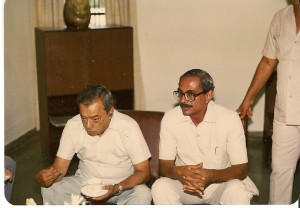
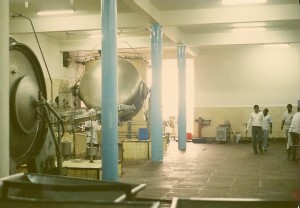
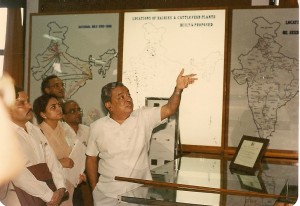
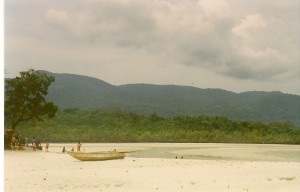

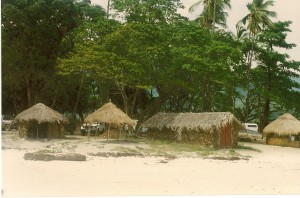

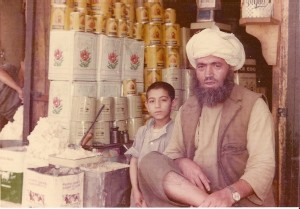

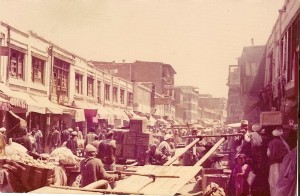


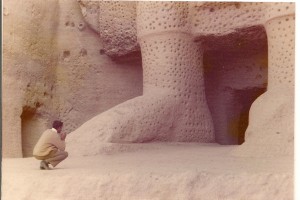
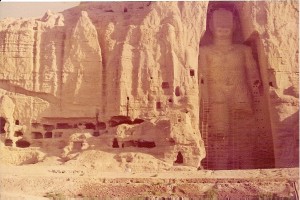
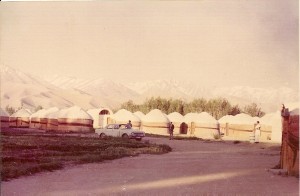
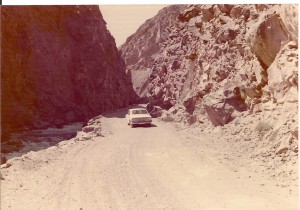
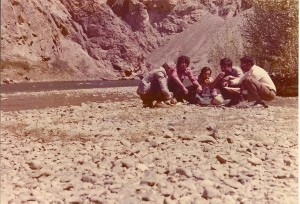
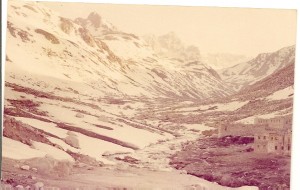

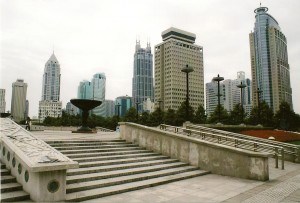

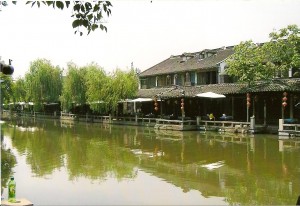

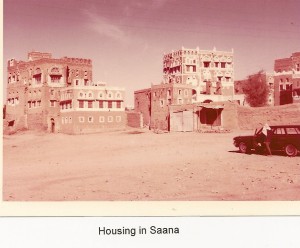

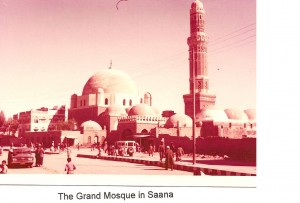


5 Responses to Welcome